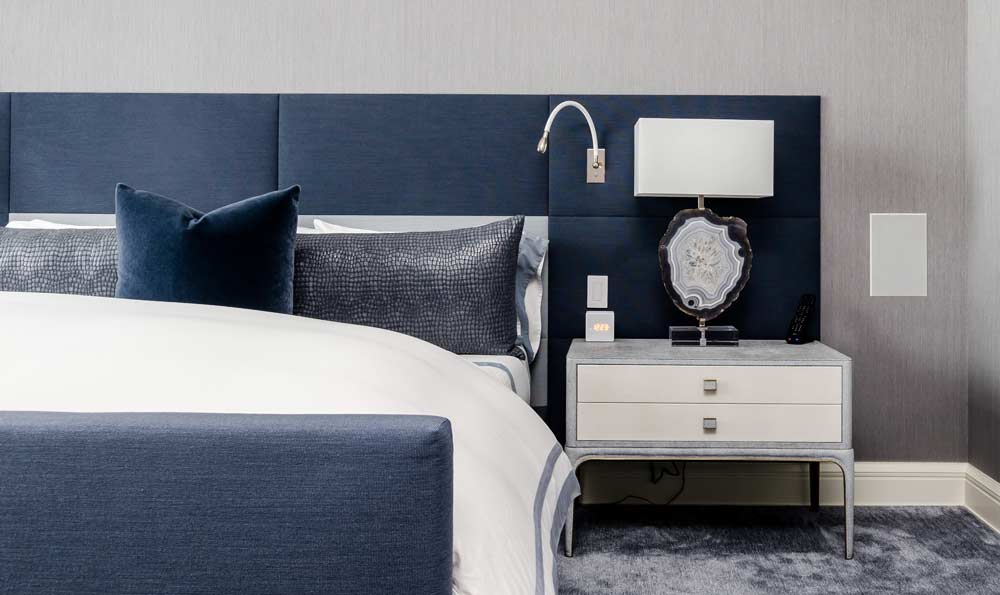[vc_row][vc_column][vc_column_text]
Over a third of British adults admit to not getting enough sleep, yet many struggle to tackle the problem. Many of us are aware of the importance of good sleep, and may take steps to improve our sleep hygiene, diet and exercise, but the sleeping environment is often overlooked. Home technology can play an important role in healthcare in the modern world, and this extends to helping us to achieve a healthy and beneficial sleeping environment.
The Ideal Environment For Sleep
A healthy sleeping environment is a crucial component of a good night’s sleep. The ideal sleeping environment is a cool, uncluttered room decorated in peaceful colours with minimal noise and light. These factors can all be achieved with thoughtful room design, but technology can aid and enhance the sleeping environment too, which is particularly beneficial for those who travel regularly and may have limited control over their space. Individual pieces of technology can be used to improve the sleep environment, but IoT devices can also be combined to create the perfect space for sleep at home, allowing closer control of environmental factors such as light, sound, temperature, and air quality.
Light And Sound
Both light and sound can be particularly intrusive to sleep, particularly for those who live in cities. Our bodies are naturally predisposed to respond to the Earth’s changing light, and while dark curtains and blackout blinds are helpful to achieving the darkness required for sleep, they can make waking up more challenging. Intelligent blinds react to natural light, rising with the morning sun and closing at dusk, and are equipped with manual overrides, allowing users complete control. Gradually changing lights like The Glow Light can be used to mimic the effects of sunrise, enabling users to wake naturally, without the need for alarms, and fall asleep easily with a naturally dimming evening light. Meanwhile, white noise machines can be used to block out the disruptive sounds of a city at night, and devices like Nightingale are designed to mask specific undesirable sounds and emit soothing, natural sounds in their place. Modern devices like these allow us to create more natural sleeping environments that aren’t available to us in a 24 hour culture, where artificial light and sound seeps into our bedrooms, often without us being aware of the disruption it causes.
Temperature And Air Quality
For optimum sleep, our bedrooms should be cool: ideally between 16°C and 18°C. Smart thermostats like Nest can employed to regulate room temperature, ensuring that the perfect temperature is maintained throughout the night whatever the season. Intelligent mattresses can also regulate the temperature of the bed itself, responding to shifting temperatures in the body. With temperature under control, devices are available to track disruptive toxins in the air, empowering users to adjust their air quality to improve the sleeping environment. Electrical diffusers can also be used to purify the air and emit calming essential oils like lavender to create a relaxing environment conducive to sleep.
While banishing electronic devices from the bedroom and minimising late-night exposure to blue light are widely cited for their importance to good sleep, there is clearly a valuable place for technology in creating the perfect sleeping environment. By combining thoughtful bedroom design with new technology, improved sleep quality is well within our reach.
[/vc_column_text][/vc_column][/vc_row]
